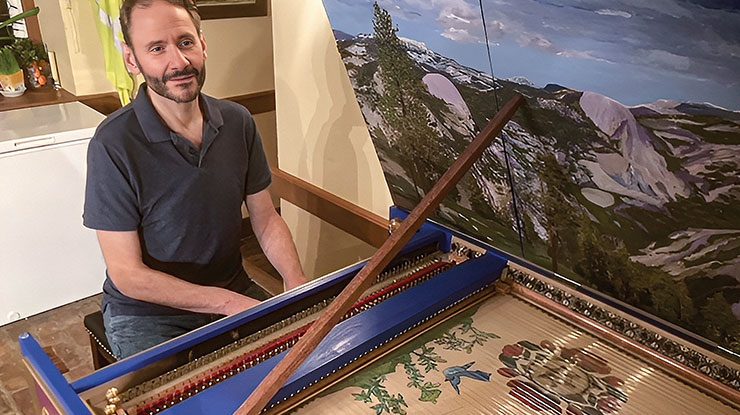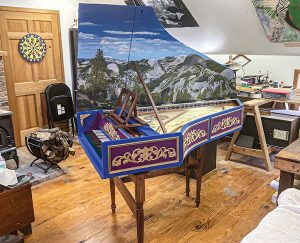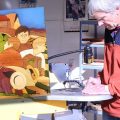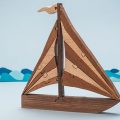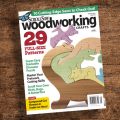Musician Paul Daher constructs an instrument fit for a symphony
By Kelly Umenhofer
At the beginning of 2020, Paul Daher was looking for a project he could tackle at home during the COVID-19 lockdown. With his late father’s tools, Paul decided to build his childhood dream project—a harpsichord.
Did You Know?The harpsichord is a keyboard instrument in which the strings are plucked, rather than hit with a hammer. |
|
|
The instrument caught Paul’s attention in high school, as he learned instrument tuning and repair from a professional piano technician. Although harpsichords are similar to pianos in shape, Paul found that they produced a softer sound, and the tone was consistent no matter how hard he struck the keys. He was hooked. After seeing Paul’s interest in the instrument’s design and mechanical makeup, the technician lent him a copy of Evan J. Kern’s Harpsichord: Design and Construction. “My passion for the instrument grew more intense, but I didn’t just want to go out and buy a harpsichord; I needed to build one from scratch,” he said. |
|
Before building began, Paul bought his own copy of Kern’s book so he could keep poring through it. He sketched out ideas on the backs of wrapping paper rolls. Then, he acquired the necessary tools: a jigsaw to cut the larger curved pieces for the soundboard and the keyboard blanks, a band saw for the more heavy-duty cuts, and—of course—a scroll saw for the finicky details. Finally, he began cutting the pieces. Oak was Paul’s wood of choice for the keys. He then made the case, bottom board, and soundboard, taking great care not to alter the sound quality since he was adding the jacks and tuning the strings during the building process. “It was trial and error for me in maintaining quality of sound during construction,” he said. “The types and thickness of wood, length of instruments, string gauge, soundboard bracing, and even the type of plectrum (part of the jack mechanism which plucks the strings) affected the tone and sound of the instrument.” |
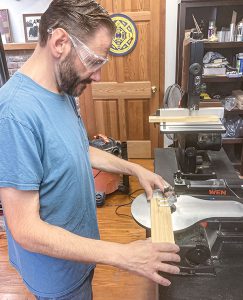
Paul cutting keys on a scroll saw. |
Tip: The Thinner the BetterFor the best sound quality, the soundboard should be made with 1/8″ (3mm)-thick wood, such as quarter sawn spruce, to better amplify the vibrations of the strings as they are transferred to the soundboard. |
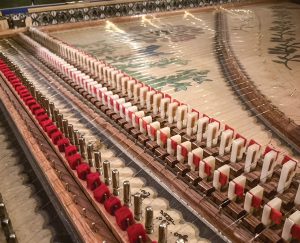 |
|
Once the pieces were assembled, Paul wanted to make the instrument stand out by painting the exterior in vibrant colors, adding spray-painted gold ornamental moldings to the sides, and finishing the inside lid with a photographic wall mural of Yosemite National Park. As a final touch, he added a paper-mache rose (often added by harpsichord builders) to the inside of the soundboard. Finally, he was able to play his creation. “It was truly profound to realize I had accomplished what I set out to do,” he said. After a year of planning and building, Paul’s harpsichord resides in his New Jersey home, where he still finds great pleasure and satisfaction each time he sits down to play. Even though he has built his dream instrument, Paul wants to keep making more. “My scroll saw was an invaluable tool in building the instrument and was by far one of the best investments for my workshop,” he said. To learn more about Paul’s work, email him at daherharp@gmail.com. |
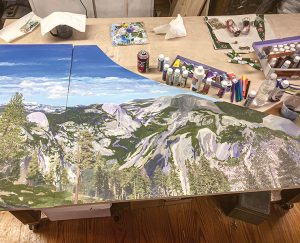
Harpsichords often showcase paintings of landscapes or mythological scenes inside the lid. |
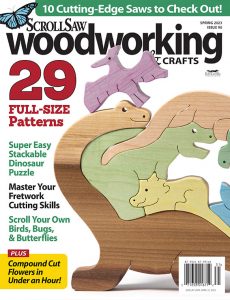 |
Purchase our spring issue!
Purchase Our Spring Issue Here!
For more articles like these, subscribe to Scroll Saw Woodworking & Crafts magazine. SubscribePlus! Get mini magazines in your e-mail between printed issues with Short Cuts, our e-mail newsletter. |


